 W
WThe armed forces of many nations have, at one time or another, used foreign volunteers who are motivated by political, ideological or other considerations to join a foreign army. These may be formed into units of a given nationality or may be formed into mixed nationality foreign units. Sometimes foreign volunteers were or are incorporated into ordinary units. The practice has a long history, dating back at least as far as the Roman Empire, which recruited non-citizens into Auxiliary units on the promise of them receiving Roman citizenship for themselves and their descendants at the end of their service.
 W
WThe 1st Canadian Regiment, an Extra Continental regiment, was raised by James Livingston to support Colonial efforts in the American Revolutionary War during the invasion of Quebec. Livingston recruited men from Chambly, Quebec as early as September 1775, but a formal regimental designation was made by Richard Montgomery on November 20, 1775, with recognition by the Second Continental Congress following on January 8, 1776. The regiment, which never approached its authorized size of 1,000 men, saw action primarily in the Canadian theater and New York, and was disbanded on January 1, 1781, at King's Ferry, New York.
 W
WThe 2nd Canadian Regiment, also known as Congress' Own or Hazen's Regiment, was authorized on January 20, 1776, as an Extra Continental regiment and raised in the province of Quebec for service with the Continental Army under the command of Colonel Moses Hazen. All or part of the regiment saw action at Staten Island, Brandywine, Germantown and the Siege of Yorktown. Most of its non-combat time was spent in and around New York City as part of the forces monitoring the British forces occupying that city. The regiment was disbanded on November 15, 1783, at West Point, New York.
 W
W32 Battalion was a light infantry battalion of the South African Army founded in 1975, composed of black and white commissioned and enlisted personnel. It was disbanded on 26 March 1993.
 W
WThe Arab Liberation Army, also translated as Arab Salvation Army, was an army of volunteers from Arab countries led by Fawzi al-Qawuqji. It fought on the Arab side in the 1948 Palestine war and was set up by the Arab League as a counter to the Arab High Committee's Holy War Army, though in fact the League and Arab governments prevented thousands from joining either force.
 W
WThe Arab Nationalist Guard is a secular volunteer militia force operating in Syria. The group espouses an Arab nationalist ideology, gathering away from any sectarian, ethnic, or religious extremism. The Arab Nationalist Guard's membership includes nationalists from a variety of Arab countries, including Egypt, Algeria, Libya, Iraq, Lebanon, Palestine, Tunisia, Syria and Yemen. Some of their militiamen had fought previously in the Libyan Civil War and the Iraq War.
 W
WArmenian battalions refer to military units formed by Armenian volunteer conscripts, mostly fighting against the Ottoman forces:1912-13, Balkan Wars, an auxiliary battle group in Bulgarian Army. 1914-17, World War I, Armenian volunteer units were employed in the Russian Imperial Army 1914-17, World War I, Armenian volunteer units were employed in the Egyptian Expeditionary Force of British Army. 1916-20, World War I, French Armenian Legion were employed in the French Army. The unit was active in Adana and Arara. 1940-45, World War II, Armenian Legion.
 W
WThe Legionary Air Force was an expeditionary corps from the Italian Royal Air Force. It was set up in 1936 and sent to provide logistical and tactical support to the Nationalist faction after the Spanish coup of July 1936 marked the onset of the Spanish Civil War.
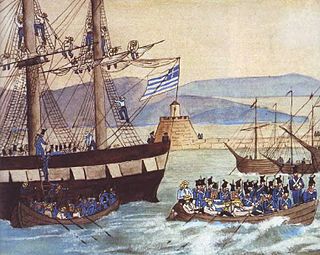 W
WThe Royal Bavarian Auxiliary Corps was a military force formed in 1832 to accompany the Bavarian prince Otto to the newly independent Kingdom of Greece, after he was chosen as the country's first king. As part of the treaty provisions of Otto's accession, a Bavarian-staffed volunteer military corps was to be formed to replace the forces maintained there by the Great Powers—chiefly the French troops of the Morea Expedition—as well as the remnants of the Greek forces organized during the Greek War of Independence, and provide cadres and training for the new Hellenic Army. Because not enough volunteers could be found in time, regular Bavarian Army troops formed much of the actual corps that arrived with Otto in Greece in early 1833. The Bavarian Army regulars were gradually replaced by volunteers until 1834. These came chiefly from Bavaria, but also included men from diverse nations, and often of non-military background. Most of the Bavarians left by 1837, but many remained behind, dominating the Greek army and the administration. This "Bavarocracy" (Βαυαροκρατία), coupled with the huge expenses involved in maintaining the Bavarians, provoked great resentment among the Greeks, and was one of the chief causes of the 3 September 1843 Revolution.
 W
WSeveral military units have been known as the Belgian Legion. The term "Belgian Legion" can refer to Belgian volunteers who served in the French Revolutionary Wars, Napoleonic Wars, Revolutions of 1848 and, more commonly, the Mexico Expedition of 1867.
 W
WThe Blue Legion, officially called the Spanish Volunteer Legion, was a volunteer legion created from 2,133 falangist volunteers who remained behind at the Eastern Front after most of the Spanish Blue Division was repatriated in March 1944 because Francisco Franco had started negotiations with the Allies. It officially consisted of two battalions. It was later estimated that the legion grew to over 3,000 Spaniards.
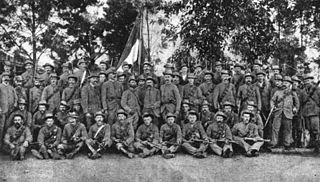 W
WBoer foreign volunteers were participants who volunteered their military services to the Boers in the Second Boer War.
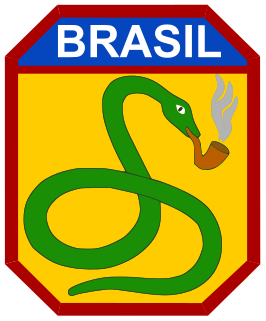 W
WThe Brazilian Expeditionary Force consisted of about 25,900 men arranged by the army and air force to fight alongside the Allied forces in the Mediterranean Theatre of World War II. This air–land force consisted of a complete infantry division, a liaison flight, and a fighter squadron.
 W
WThe British Free Corps was a unit of the Waffen-SS of Nazi Germany during World War II, made up of British and Dominion prisoners of war who had been recruited by Germany. The unit was originally known as the Legion of St George. Research by British historian Adrian Weale has identified 54 men who belonged to this unit at one time or another, some for only a few days. At no time did it reach more than 27 men in strength.
 W
WThe Bulgarian Legion was the name of two military bands formed by Bulgarian volunteers in the Serbian capital of Belgrade in the second part of the 19th century. Their ultimate goal was the liberation of the Bulgarian people from Ottoman rule through coordinated actions with the neighbouring Balkan countries.
 W
WThe Catalan Company or the Great Catalan Company was a company of mercenaries led by Roger de Flor in the early 14th century and hired by the Byzantine Emperor Andronikos II Palaiologos to combat the increasing power of the Anatolian beyliks. It was formed by almogavar veterans of the War of the Sicilian Vespers, who had remained unemployed after the signing in 1302 of the Peace of Caltabellotta between the Crown of Aragon and the French dynasty of the Angevins.
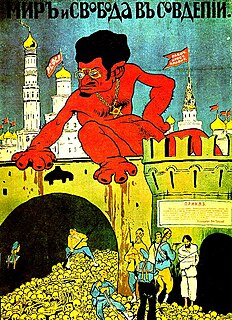 W
WThere are a number of reports about the involvement of Chinese detachments in the Russian Revolution and Russian Civil War. Chinese served as bodyguards of Bolshevik functionaries, served in the Cheka, and even formed complete regiments of the Red Army. It has been estimated that there were tens of thousands of Chinese troops in the Red Army, they were among the few groups of foreigners fighting for the Red Army.
 W
WThe Chinese Labour Corps was a force of workers recruited by the British government in the First World War to free troops for front line duty by performing support work and manual labour. The French government also recruited a significant number of Chinese labourers, and although those labourers working for the French were recruited separately and not part of the CLC, they are often considered to be so. In all, some 140,000 men served for both British and French forces before the war ended and most of the men were repatriated to China between 1918 and 1920.
 W
WThe Corps of Volunteer Troops was a Fascist Italian expeditionary force which was sent to Spain to support the Nationalist forces under General Francisco Franco against the Spanish Republic during the Spanish Civil War, 1936–39.
 W
WThe Corsican Guard was a military unit of the Papal States composed exclusively of Corsican mercenaries on duty in Rome, having the functions of an urban militia and guard for the Pope.
 W
WThe Dodecanese Regiment or Regiment of the Dodecanesians was an infantry regiment of the Hellenic Army composed to a large extent of volunteers from the Dodecanese Islands and was formed shortly after Greece entered World War II. The islands were under Italian occupation since 1912, and consequently the Dodecanesian Greeks had Italian citizenship, yet they were eager to fight against the Italian Army either in the Dodecanese or on the Albanian Front.
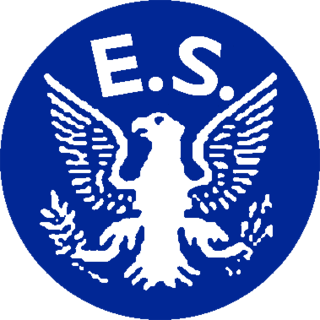 W
WThe Eagle Squadrons were three fighter squadrons of the Royal Air Force (RAF) formed with volunteer pilots from the United States during the early days of World War II, prior to America's entry into the war in December 1941.
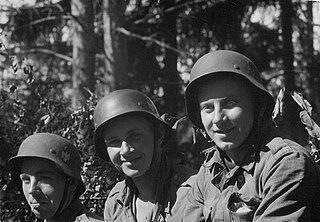 W
WInfantry Regiment 200 or soomepoisid was a unit in the Finnish army during World War II made up mostly of Estonian volunteers, who preferred to fight against the Soviet Union in the ranks of the Finnish army instead of the armed forces of Germany.
 W
WThe Flight Regiment 19, also known as the Swedish Voluntary Air Force or F 19 was a Finnish Air Force unit, manned by Swedish volunteers, which operated from Kemi in northern Finland for the last 62 days of the Winter War. The aircraft also came from the Swedish Air Force inventory. Its designation number was taken from the Swedish Air Force which had 18 flying regiments at the time. The designation F 19 has not been used in Sweden. When new regiments were formed they were named F 20, F 21 and F 22.
 W
WThe First American Volunteer Group (AVG) of the Republic of China Air Force in 1941–1942, nicknamed the Flying Tigers, was composed of pilots from the United States Army Air Corps (USAAC), Navy (USN), and Marine Corps (USMC), recruited under President Franklin Roosevelt's authority before Pearl Harbor and commanded by Claire Lee Chennault. Their Curtis P-40B Warhawk aircraft, marked with Chinese colors, flew under American control. Their mission was to bomb Japan and defend the Republic of China, but many delays meant the AVG flew in combat after the US and Japan declared war.
 W
WForeign enlistment in the American Civil War largely favored the Union, which was far more successful in attracting international volunteers. Nonetheless, thousands of immigrants and mercenaries served with the Confederacy.
 W
WRoyal French foreign regiments were enlisted abroad for French service during the 17th and 18th centuries. Coming mainly from Switzerland, Germany, Ireland, and Wallonia they gave a significant contribution to the French military effort. Swedish and Polish regiments were counted as German; Scotch as Irish. After the French Revolution the foreign regiments were in 1791 merged with the indigenous French regiments to new, numbered, regiments of the line.
 W
WThe Garde Écossaise was an elite Scottish military unit founded in 1418 by the Valois Charles VII of France, to be personal bodyguards to the French monarchy. They were assimilated into the Maison du Roi and later formed the first company of the Garde du Corps du Roi.
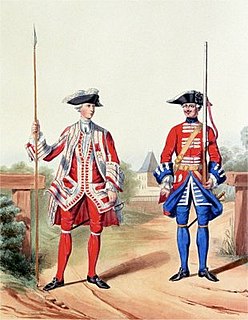 W
WSwiss Guards are the Swiss soldiers who have served as guards at foreign European courts since the late 15th century.
 W
WThe Greek Volunteer Legion was a volunteer military corps formed by Greeks and other Balkan Christians that fought for the Russian Empire during the Crimean War. It was formed in the Danubian Principalities in March 1854, and some elements participated in the final engagements of the Danube theatre, before the Russian troops abandoned the Principalities. From there the Legion was sent to the Crimea, where it fought in the Siege of Sevastopol. In 1855 the Legion received the title Greek Legion of Emperor Nicholas I. After the end of the siege, the bulk of the Legion was discharged, and the remainder of the unit was disbanded after the war's end in March 1856. Most of the volunteers returned to their homelands, although a few settled in Russia.
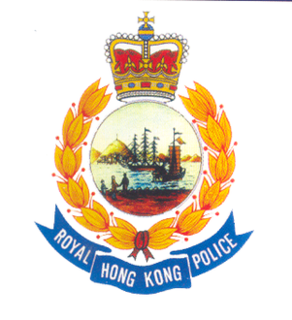 W
WThe history of the Hong Kong Police originates in 1841, when the Hong Kong Police Force (HKPF) was officially established by the British colonial government, the same year that the British had settled in Hong Kong. While changes have been implemented throughout the People's Republic of China (PRC) since the transfer of sovereignty in 1997, the Hong Kong Police Force has since been responsible for serving the city.
 W
WThe Hungarian Volunteers in the Winter War travelled to fight for the Finns after the Soviet invasion of Finland in 1939. For a variety of reasons, volunteers from the Kingdom of Hungary fought on the side of Finland during the Winter War (1939–1940) against the Soviet Union.
 W
WThe International Brigades were military units set up by the Communist International to assist the Popular Front government of the Second Spanish Republic during the Spanish Civil War. The organization existed for two years, from 1936 until 1938. It is estimated that during the entire war, between 40,000 and 59,000 members served in the International Brigades, including 15,000 who died in combat.
 W
WThe International Brigades (IB) were volunteer military units of foreigners who fought on the side of the Second Spanish Republic during the Spanish Civil War. The number of combatant volunteers has been estimated at between 32,000–35,000, though with no more than about 20,000 active at any one time. A further 10,000 people probably participated in non-combatant roles and about 3,000–5,000 foreigners were members of CNT or POUM. They came from a claimed "53 nations" to fight against the Spanish Nationalist forces led by General Francisco Franco and assisted by German and Italian forces.
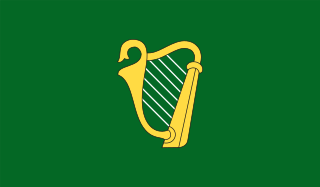 W
WTwo Irish Commandos volunteer military units of guerilla militia fought alongside the Boers against the British forces during the Second Boer War (1899–1902).
 W
WThe Italian Volunteer Legion also known as the Italian Scouts were an expatriate military unit which took part in the Anglo-Boer War, raised and led by soldier and adventurer Camillo Ricchiardi on behalf of General Louis Botha.
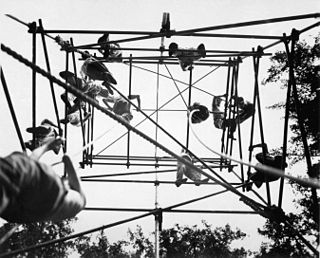 W
WOperation Jedburgh was a clandestine operation during World War II, in which personnel of the British Special Operations Executive (SOE), the U.S. Office of Strategic Services (OSS), the Free French Bureau Central de Renseignements et d'Action and the Dutch and Belgian armies in exile were dropped by parachute into occupied France, the Netherlands and Belgium to conduct sabotage and guerrilla warfare, and to lead the local resistance forces in actions against the Germans.
 W
WJewish Americans have served in the United States armed forces dating back to before the colonial era, when Jews had served in militias of the Thirteen Colonies. Jewish military personnel have served in all branches of the armed forces and in every major armed conflict to which the United States has been involved. According to the U.S. Department of Defense, as of 2006 there were currently 3,973 known Jewish servicemen and servicewomen on active duty.
 W
WKorean Augmentation To the United States Army is a branch of the Republic of Korea Army that consists of Korean drafted personnel who are augmented to the Eighth United States Army (EUSA). KATUSA does not form an individual military unit, instead small numbers of KATUSA members are dispatched throughout the most of the Eighth United States Army departments, filling in positions for the United States Army enlisted soldiers and junior non-commissioned officers. KATUSAs are drafted from pool of qualified volunteers who are subjected to mandatory military service for Korean male citizens. While ROK Army holds the responsibility for personnel management of KATUSAs, KATUSA members are equipped with standard United States Army issues, and live and work with the U.S. enlisted soldiers. This kind of augmentation is unique throughout the entire United States Army worldwide, because KATUSA program was developed during Korean War as a temporary measure to cope with a shortage of personnel in the United States Army.
 W
WMahal, more often spelled Machal, refers to the group of overseas volunteers who fought alongside Israeli forces during the 1948 Arab–Israeli War. Some 4,000 volunteers, mostly Jews but also non-Jews, arrived from all over the world. Mahal is an acronym of מתנדבי חוץ לארץ.
 W
WThe Mickiewicz Legion or the Polish Legion was a military unit formed on March 29, 1848 in Rome by one of the most notable Polish poets, Adam Mickiewicz, to take part in the liberation of Italy.
 W
WOhrana were armed collaborationist detachments organized by the former Internal Macedonian Revolutionary Organization (IMRO) structures, composed of Bulgarians in Nazi-occupied Greek Macedonia during World War II and led by officers of the Bulgarian Army. Bulgaria was interested in acquiring Thessalonica and Western Macedonia, under Italian and German occupation and hoped to sway the allegiance of the 80,000 Slavs who lived there at the time. The appearance of Greek partisans in those areas persuaded the Axis to allow the formation of these collaborationst detachments. However, during late 1944, when the Axis appeared to be losing the war, many Slavophone Nazi collaborators, Ohrana members and VMRO regiment volunteers fled to the opposite camp by joining the newly founded communist SNOF. The organization managed to recruit initially 1,000 up to 3,000 armed men from the Slavophone community that lived in the western part of Greek Macedonia.
 W
WThe (Chinese) People's Volunteer Army was the armed expatriate volunteer forces deployed by the People's Republic of China during the Korean War. Although all units in the PVA were actually transferred from the People's Liberation Army under orders of Mao Zedong, the PVA was separately constituted in order to prevent an official war with the United States. The PVA entered Korea on October 19, 1950, and completely withdrew by October 1958. The nominal commander and political commissar of the PVA was Peng Dehuai before the ceasefire agreement in 1953, although both Chen Geng and Deng Hua served as acting commander and commissar after April 1952 due to Peng's illness. The initial units in the PVA included 38th, 39th, 40th, 42nd, 50th, 66th Corps totalling 250,000 men, and eventually about 3 million Chinese civilian and military personnel served in Korea by July 1953.
 W
WPolish 7th Air Escadrille, better known as the Kościuszko Squadron, was one of the units of the Polish Air Force during the Polish-Soviet War of 1919-1921. Formed in late 1918, it was re-formed in late 1919 from US volunteers. It was one of the most active Polish squadrons in the war.
 W
WThe Polish Air Forces was the name of the Polish Air Forces formed in France and the United Kingdom during World War II. The core of the Polish air units fighting alongside the Allies were experienced veterans of the 1939 invasion of Poland. They contributed to the Allied victory in the Battle of Britain and Allied air operations during WW2.
 W
WGarrison Cemetery is located in Seringapatam, on the banks of the river Cauvery, about 300m from the Bangalore Mysore Highway. It has about 307 graves of the European officers killed in the final assault on Tippu Sultan in 1799, and their family members. Among the graves, there are 80 graves of the officers of the Swiss ‘de Meuron Regiment’, and the rest of the graves are their family members.
 W
WThe Regiment de Meuron was a regiment of infantry originally raised in Switzerland in 1781 for service with the Dutch East India Company (VOC). At the time the French, Spanish, Dutch and other armies employed units of Swiss mercenaries. The regiment was named for its commander, Colonel Charles-Daniel de Meuron, who was born in Neuchâtel in 1738.
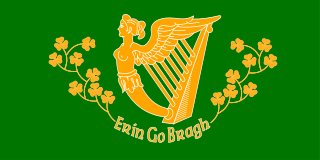 W
WThe Saint Patrick's Battalion was a unit of 175 to several hundred immigrants and expatriates of European descent who fought as part of the Mexican Army against the United States in the Mexican–American War of 1846–48. Formed and led by John Riley, the battalion's members included many who had deserted or defected from the United States Army. The battalion served as an artillery unit for much of the war. Despite later being formally designated as two infantry companies, it still retained artillery pieces throughout the conflict. In many ways, the battalion acted as the sole Mexican counterbalance to the recent U.S. innovation of horse artillery. The San Patricios were responsible for the toughest battles encountered by the United States in its invasion of Mexico, with Ulysses S. Grant remarking that "Churubusco proved to be about the severest battle fought in the valley of Mexico".
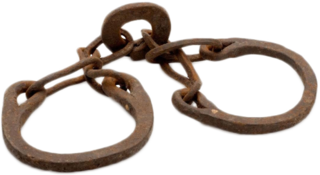 W
WṢaqāliba is a term used in medieval Arabic sources to refer to Slavs and other peoples of Central and Eastern Europe, or in a broad sense to European slaves. The term originates from the Middle Greek slavos/sklavenos (Slav), which in Hispano-Arabic came to designate first Slavic slaves and then, similarly to the semantic development of the term in other West-European languages, foreign slaves in general. The word is often misused to refer only to slaves from Central and Eastern Europe, but it refers to all Europeans and others traded by the Arab traders during the war or peace periods.
 W
WThe Scythian archers were a hypothesized police force of 5th- and early 4th-century BC Athens that is recorded in some Greek artworks and literature. The force is said to have consisted of 300 armed Scythians who were public slaves in Athens. They acted for a group of eleven elected Athenian magistrates "who were responsible for arrests and executions and for some aspects of public order" in the city.
 W
WThe Soviet Volunteer Group was the volunteer part of the Soviet Air Forces sent to support the Republic of China during the Second Sino-Japanese War between 1937 and 1941. After the Marco Polo Bridge Incident, the Sino-Soviet Non-Aggression Pact was signed and strong Soviet support was given to China by the Soviet Union, including the volunteer squadrons. China paid for the support in the form of raw materials.
 W
WThe Spanish Legion, informally known as the Tercio or the Tercios, is a unit of the Spanish Army and Spain's Rapid Reaction Force. It was raised in the 1920s to serve as part of Spain's Army of Africa. The unit, which was established in January 1920 as the Spanish equivalent of the French Foreign Legion, was initially known as the Tercio de Extranjeros, the name under which it began fighting in the Rif War of 1920–1926. Although foreign recruitment spans the Spanish-speaking nations, the majority of recruits are Spaniards. Over the years, the force's name has changed from Tercio de Extranjeros to Tercio de Marruecos, and by the end of the Rif War it became the "Spanish Legion", with several "tercios" as sub-units.
 W
WThe Swedish Brigade was a paramilitary unit composed of 400 Swedish volunteers to assist the White Guards during the 1918 Finnish Civil War. The brigade participated in the Battle of Tampere between 28 March and 6 April. 34 members of the Swedish Brigade were killed in action and up to 50 wounded. Notable members included the archaeologist Axel Boëthius and the historian Olof Palme who was killed in Tampere.
 W
WThe Swedish Volunteer Battalion or the Hanko Battalion was a Swedish military unit consisting of volunteers, which participated in the siege of the Soviet naval fleet in Hanko during the Continuation War of Finland.
 W
WThe Swedish Volunteer Corps during the Winter War numbered 9,640 officers and men. Sweden was officially non-belligerent during the war, so the Corps was used by Finland. The Swedish volunteers were in the front lines in the northern Salla area starting from February 28, 1940. Their losses included 33 dead, 10 missing, 50 wounded, and 130 disabled by frostbite. There were also 25 aircraft that served in the Swedish Voluntary Air Force, F19. Swedish volunteers also defended Turku in an anti-aircraft battery.
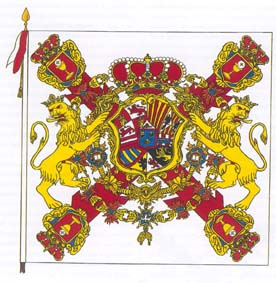 W
WThe Walloon Guards were an infantry corps recruited for the Spanish Army in the region now known as Belgium, mainly from Catholic Wallonia. As foreign troops without direct ties amongst the Spanish population, the Walloons were often tasked with the maintenance of public order, eventually being incorporated as a regiment of the Spanish Royal Guard.